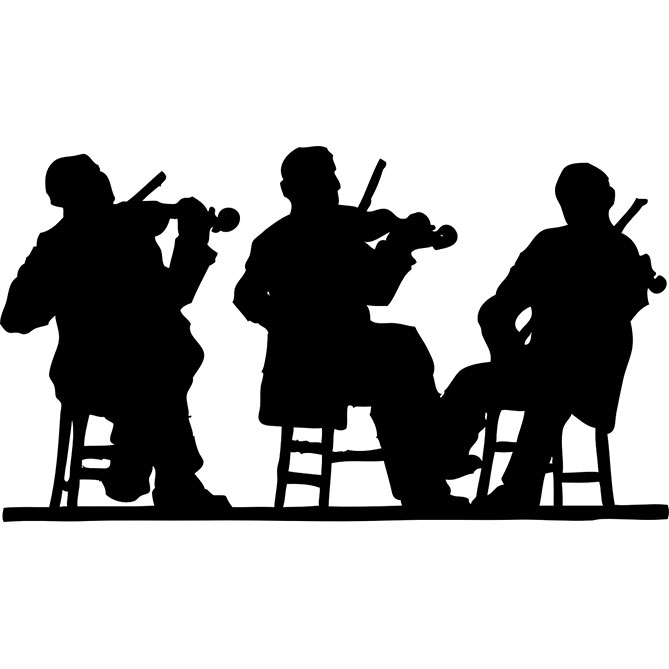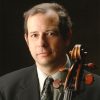
A Chamber Music Concert is Worth a Thousand Words
Thomas Rosenberg
One of the goals of good teaching is assisting students to develop into interesting, compelling and communicative artists. Of course, there are many influences that create artistic musicians and many of them can be discussed and demonstrated in lessons. However, one of the factors that I believe is extremely important is also one that cannot actually happen in a lesson. For it to get done, you must often rely on the parents of your students or, for collegiate students, the student themselves.
That factor is getting students to attend concerts to hear and watch professional and artistic musicians performing “live.”
Imagine the difference it would make to students who love sports if they could not see great athletes performing. It is relatively easy to see a basketball game, baseball game, tennis match, football game, gymnastic or swim meet, etc. All one has to do is turn on the TV! And yet, going to a sporting event makes a much bigger impression and is more fun that sitting on the couch at home, and certainly is a more dynamic experience than listening to a game on the radio. The same is true of music events. Listening to a recording or live radio concert of a great artist, orchestra or chamber ensemble has many rewarding benefits, but seeing it can be even better. In recent years, it has become possible to see some interesting performances on the internet through sites like YouTube. Especially interesting are the concert videos featuring legendary performers who have passed away. But, watching a video just is not the same experience as going to hear a live performance and being part of the audience. And unlike sporting events, concerts on television are relatively few and far between…..especially concerts of chamber music.
Artistry is often necessarily a part of studio teaching that is generally taught to more advanced players. There are so many issues that need to be covered in a lesson that artistry is frequently ignored or at least put on the back burner. However, there is a way to start teaching artistry to even beginning students….Concerts!….getting them to hear and see concerts! Much like a picture is worth a thousand words, so too is concert attendance. The more concerts a student can attend, the more they can learn. Orchestra concerts are fun, exciting and large scale. Many students play in youth symphonies and can benefit greatly by hearing a professional caliber orchestra concert. However, individual artistry is hard to observe and though there is often a soloist who is usually a great player and often a great artist, they most often have to be observed from afar.
On the other hand, chamber music concerts are almost always in more intimate spaces allowing students to observe up close just what artistic playing is all about. Tickets are usually far less expensive than orchestra concerts and some are even free. In addition, many chamber music concerts feature unreserved seating. This means that if you arrive a little bit early, you can get the best seats in the house and sit very close to the artists if you so choose, sometimes even right on the stage with them! You can literally feel the artistic intentions of the musicians and observe how they approach their instrument from a technical point of view. A motivated student can observe each player for many things such as the bow hold, vibrato, use of color in the sound, cueing, breathing and other communication techniques among the performers and sometimes even how they put markings in the music. A good chamber music concert not only has great music as a part of it, but also can cause audience members to feel a direct and personal connection to the artists on stage. There can even be a personal connection made through eye contact during moments of applause. As a bonus, many chamber music concerts also have post-concert receptions where audience members can not only have a delicious snack (a big draw for some younger students!), but also have an extended conversation with some or all of the musicians who just played. All of these things can have a significant and lasting impression on students and significantly affect how they grow artistically and what they strive to do when they perform.
The studio teacher can do many things to encourage concert attendance. Chamber music concerts should perhaps be included more often near the top of the list of concerts students should be encouraged to attend. Usually, it makes a bigger impact if specific recommendations are passed along. This can be done in many ways, and often the best strategy is to employ more than one. For instance, teachers can inform students and/or their parents of concerts via email and Face book, a prepared list printed out on a sheet of paper, flyers for concerts posted at the teaching studio itself and personal verbal reminders. Some teachers may want to consider requiring that their students attend a certain number of concerts each year. This sends a message that the teacher really does feel it is truly important to the development of their students.
To find out what chamber music concerts are going on, the “entertainment” section of newspapers, flyers in violin shops and at universities, magazines, and the web all are excellent sources of information. Most students and their families are very busy with day-to- day events and it is often hard for them to squeeze in yet another music activity. Some have parents who like to go to concerts, have the financial means to do so, and bring their kids along. Others are less into doing that, or simply can’t swing it logistically. For those students, carpools are an often-overlooked possibility. A small group of students can go to a concert together with only one parent as a “chaperone”. Another thing that can make a big impact is a concert “field trip” with the studio teacher. There may be a concert by a particular artist or chamber music ensemble that the teacher wants to attend. This can be a great opportunity to bring their students with them. With some advance planning, group tickets can be purchased if necessary, and students can attend without their parents. It can make a lasting impression on students, especially if the teacher can lead the group after the concert to meet the artists. Then, in subsequent lessons, that particular concert and traits that were observed can be referenced in helping the student to strive for artistic excellence.
There is one final thing that can result from having students attend chamber music concerts. It can give them the desire to play in a chamber music group if they don’t already do so. For those that already do, it can be a tremendous way to learn how to improve their ensemble playing. For all it can help to develop opinions on what styles of playing they desire to emulate, and learn about repertoire they look forward to playing. One of the great benefits of playing a string instrument is having the opportunity to play the enormous and amazing repertoire of chamber music masterpieces. Teachers can really influence the type of ensemble playing they encourage their students to take part in. All are wonderful, but chamber music can push their musical and ensembles skills forward faster than most. Usually, the first step is getting students to the concerts…events that are truly worth a thousand words.
Subjects: Chamber Music
